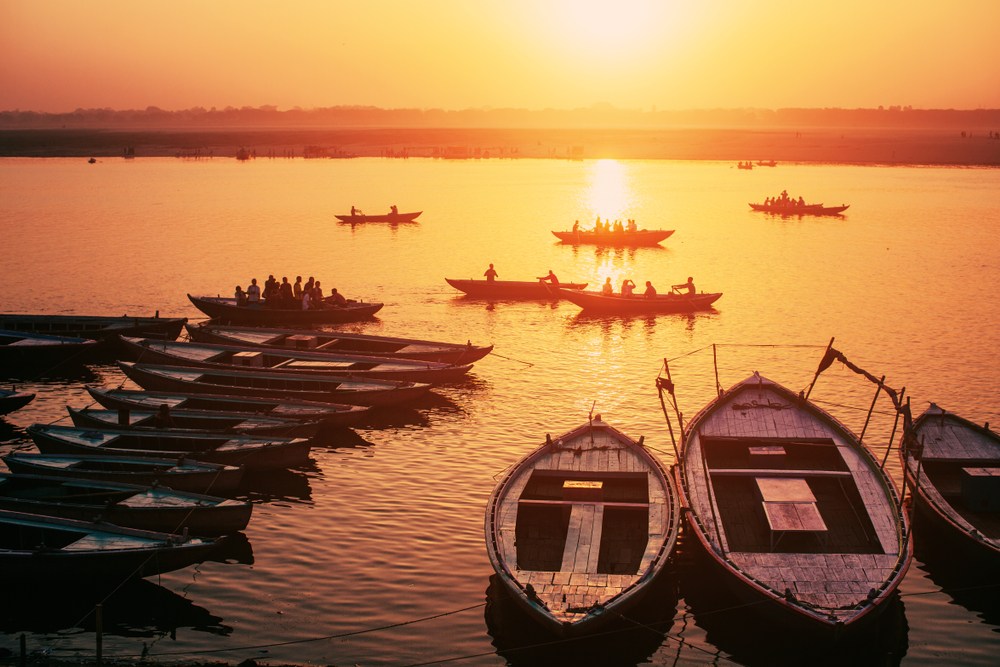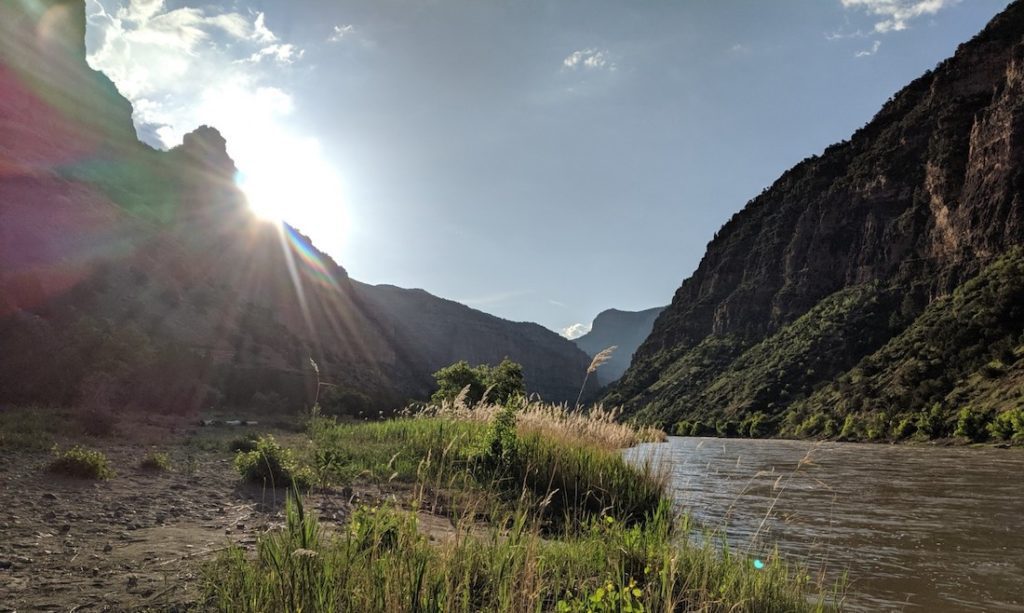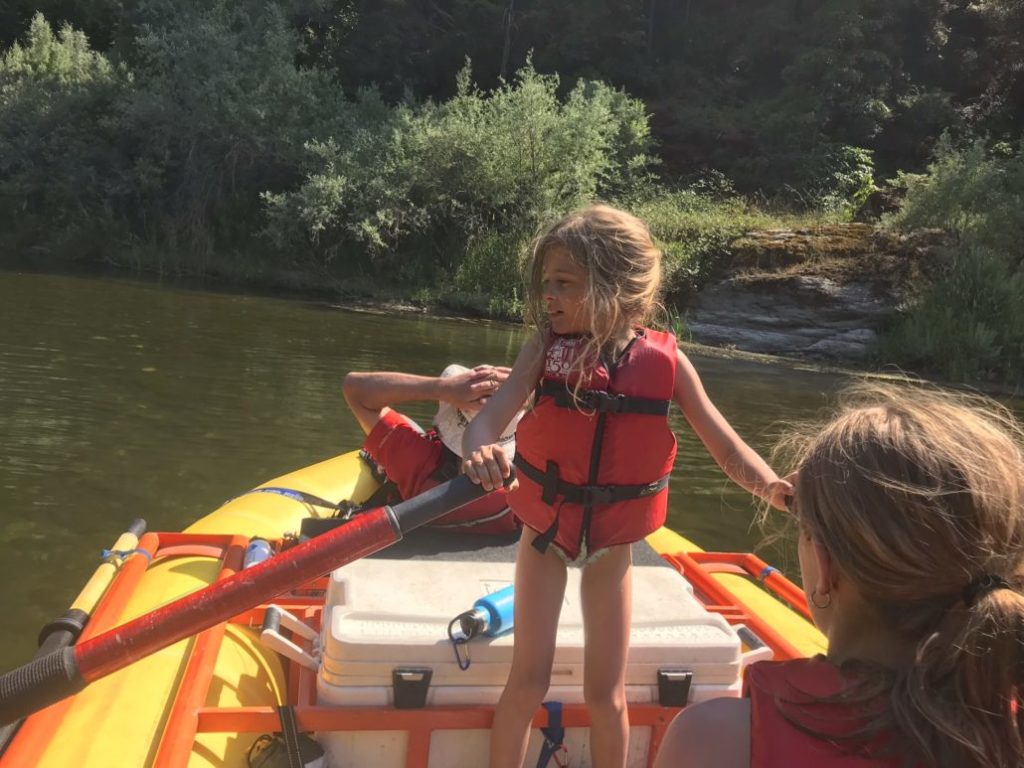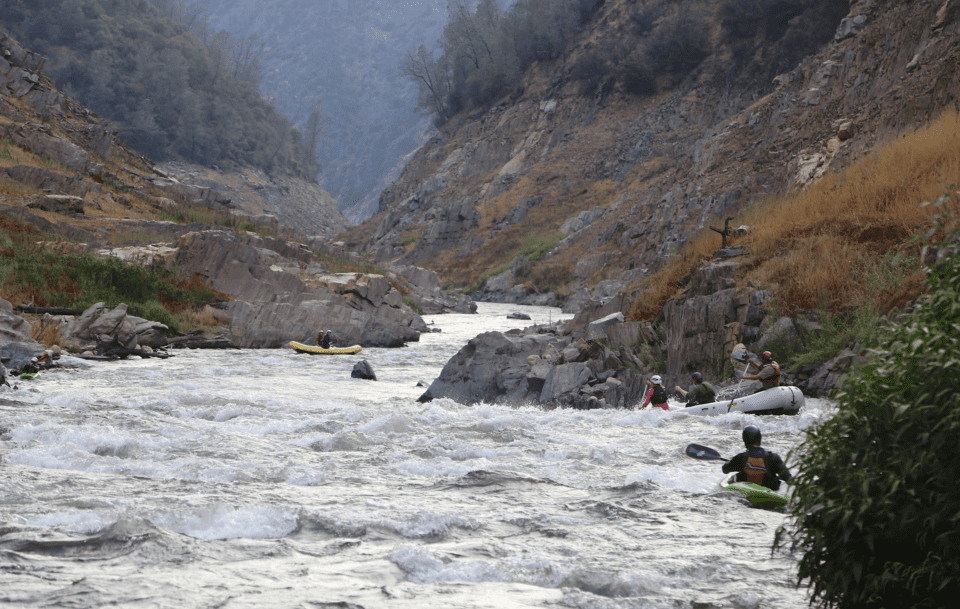An old river-running motto says, “Old boaters never die, they just get a little dinghy.” And some never lose their passion for keeping rivers wild.
Consider California’s Stanislaus River. In the 1970s, people of all ages and abilities reveled in running its 13 miles of rapids bearing scary names like Widowmaker and Devil’s Staircase. Not far from Sacramento and San Francisco, the limestone canyon offered renewal and adventure to people nearly year-round.
But back in 1944, the U.S. Bureau of Reclamation authorized 625-foot-high New Melones Dam for the Stan, though filling it would drown the beloved canyon. Dam construction began in 1966, and spirited opposition grew, giving rise to the grassroots organization Friends of the River. Advocates argued that a smaller, existing dam could meet flood control and energy production needs, without drowning the wild stretch of river.
Despite actions ranging from citizen’s initiatives to lawsuits and even a favorable Supreme Court ruling, New Melones Dam was built.


As water in the reservoir rose in 1979, Friends of the River co-founder Mark Dubois chained himself to bedrock below the high-water line to force dam operators to stop filling. Fifteen-year-old Sue Knaup also went to work, “rescuing wildlife day and night for two months from flooded trees and islands.” But she could not save them all, and Dubois could not hold back the reservoir.
The river canyon and priceless prehistoric and historic cultural sites were inundated.
Now, with New Melones logging its fourth decade of broken promises in water delivery, flood control and energy production, hundreds of river advocates from the old campaign hope to reclaim the Stan. In their teens and twenties back then, and today in their sixties and seventies, they believe the timing has never been better.


“It’s now a matter of ‘well, of course,’” says Dubois, vice-president of the new nonprofit Restoring the Stanislaus River. “National momentum is growing for dam removal and expanding economically and ecologically wise floodplains.”
Knaup, president and chief instigator of the new group, has moved her activism into filmmaking. “When Mark wanted the Stanislaus story to be told as it should be—in pictures—I offered to create a movie about the 1970s fight.”
Beginning work on the film reawakened their long-held dream of reclaiming the river, so now, members are proposing a full-watershed approach: revegetating reaches of the upper river, removing sections of New Melones to maintain lower reservoir levels and working with downstream farmers to protect floodplains.
Promoting the deconstruction of large dams attracts plenty of media attention. Think of the Klamath River in California and Oregon, and the Snake and Columbia rivers in Washington. Taking down smaller dams receives less fanfare, though some 1,100 small dams have come down in the past 20 years in the United States alone.
As California becomes ever drier, many people agree that the New Melones Dam should go. Only 26 percent full today, the reservoir has been near capacity only five times since first filling. Power-production capabilities, based on 40 years of in-flow data, have never been achieved. Even Interior Department engineers admit they underestimated the river’s drought and demand cycles “by a significant amount.”
Roy Tennant, a former Stanislaus River guide and now secretary for Restoring the Stanislaus River, acknowledges that successful full-watershed restoration will “take a ton of work and money … but we have to begin while we’re alive and have the passion to do it.”
Kevin Wolf, former river-guide organizer for the 1970s campaign and current treasurer of Restoring the Stanislaus River, says billion-dollar ballot measures might be what it takes to change the state’s water infrastructure, but “big ideas like taking dams down start with small groups of wild-eyed activists moving ideas forward.”
Dubois, whose civil action in the 1970s inspired many river protection efforts, adds that it’s time “to repair the good intentions of the outmoded dam-building era — to restore the wild rich abundance that rivers have always been.”
As for Knaup, she says “healing has already begun as both the film and the push to restore the Stanislaus River have come alive.” And the river? “I have total faith that it will know what to do.”
Becca Lawton is a contributor to Writers on the Range, writersontherange.org, an independent nonprofit dedicated to spurring lively conversation about the West. A former Grand Canyon River guide and ranger, she began as a Stanislaus River guide and advocate. Top photo: New Melones Lake. “This section of the Stanislaus River is normally impounded by New Melones Lake (Dam) The California drought in 2014 allowed us the opportunity to kayak this famous section of river.” Credit: Zachary Collier/Flickr


1 comment
Your article helped me a lot, is there any more related content? Thanks!